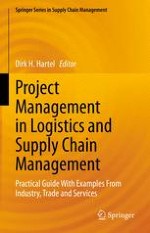This practice-oriented guide comprehensively describes the basics of planning and implementing project management in logistics and supply chain management. It also presents a range of methods and tools for assessing project risks and monitoring projects.
Containing ten detailed and practical examples involving Germany-based global players like Porsche, Würth, Continental and SME, the book shares valuable and well-founded insights into systematic project management. As such, it is chiefly intended for career starters, career changers and students in the field of logistics and supply chain management.
